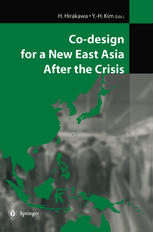

Most ebook files are in PDF format, so you can easily read them using various software such as Foxit Reader or directly on the Google Chrome browser.
Some ebook files are released by publishers in other formats such as .awz, .mobi, .epub, .fb2, etc. You may need to install specific software to read these formats on mobile/PC, such as Calibre.
Please read the tutorial at this link: https://ebookbell.com/faq
We offer FREE conversion to the popular formats you request; however, this may take some time. Therefore, right after payment, please email us, and we will try to provide the service as quickly as possible.
For some exceptional file formats or broken links (if any), please refrain from opening any disputes. Instead, email us first, and we will try to assist within a maximum of 6 hours.
EbookBell Team

4.4
32 reviewsEast Asia enjoyed a role as a growth center of the world economy from the 1960s until the currency and economic crisis of 1997. In 1993, the World Bank issued a report entitled "The East Asian Miracle: Economic Growth and Public Policy," in which the bank expressed its admiration for the region 's rapid economic develop ment. However, within only four years the region had fallen prey to the currency and economic crisis that spread outward from Thailand. In the midst of the crisis, many East Asian countries began at long last to cooperate with one another in order to cope with these unprecedented difficulties and to prevent another crisis. In fact, the East Asian region was an exception throughout the 1990s with re spect to regionalism. A surge of regionalism, which began in Europe in the second half ofthe 1980s, spread to North America and Latin America. However, the North east Asian region in particular, consisting of Japan, China (People's Republic of China), and Korea (Republic of Korea), did not participate in any kind of regional economic arrangements. Regional cooperation frameworks were limited to coun tries belonging to the Association of Southeast Asian Nations (ASEAN) and did not spread to the Northeast Asian region.